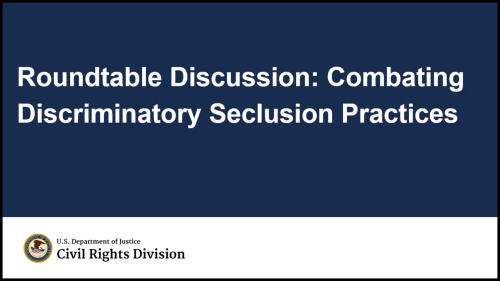What is Seclusion?
Seclusion is the involuntary confinement of a student alone in any room or area. It includes the use of any room or area in which the student is alone and not free to leave (or believes they are not free to leave).
Did you know?
- Seclusions can occur in a variety of settings, for example, small padded rooms, utility closets, areas blocked off with gym mats, or empty administrative offices.
- Seclusions can occur when a student is alone in a room, even if school staff monitors a student through an observation window or video feed.
- Seclusions can occur when a student is not free to leave a room, even if the door is unlocked or ajar, for example, if a staff holds an unlocked door closed or blocks the exit with a gym mat.
- Seclusions can occur in spaces used for “time out,” “calming down,” “de-escalation,” “quiet,” or “isolation,” if the student is alone and not free to leave.
Examples of Improper Seclusion from our cases:
- A student with an emotional disability was secluded more than 100 times during an 18-month period causing him to lose over one week of instructional time. The student was regularly secluded for non-crisis behaviors such as disrespect, non-compliance and leaving the classroom.
- A student with an emotional disability was secluded nearly 80 times over two school years for elopement, causing the student to lose instruction time for extended periods. While in seclusion, the student would often engage in self-injurious behaviors such as banging their head against the door. Staff did not intervene while the student hurt themselves, and placed the student back into seclusion repeatedly despite this pattern of self-harm.
- A student with autism was secluded three times in a row in one school day. To circumvent a prohibition of secluding a student for more than 30 minutes, staff would place the student in seclusion for 30 minutes, remove the student from seclusion for no more than 5 minutes, then immediately place the student back into seclusion for 30 minutes.
- A student with a behavioral disability was secluded over 40 times for a total of 50 hours for behavior that did not pose an imminent danger to themselves or others. The school kept the student in seclusion even after he urinated and vomited in the seclusion room.
- A student with an emotional disability was secluded nearly 30 times for behavior that did not pose an imminent danger to themselves or others. The school failed to release the student from seclusion even after they were calm, and on multiple occasions, the student fell asleep in the seclusion room and remained there until they woke up.
“The use of seclusion rooms…falls painfully short of a school district’s responsibility to support the safety, health, and educational needs of its students.” U.S. Attorney Erek L. Barron of the District of Maryland.
Learn more

Assistant Attorney General for Civil Rights Kristen Clarke gave remarks, followed by a panel discussion. The panelists, including experts, an advocate, an administrator, parents, and an attorney, discussed harmful school seclusion practices, methods to address behavior through therapeutic alternatives to seclusion, and the Department’s enforcement of civil rights statutes as they relate to the seclusion of students with disabilities.

 U.S. Department
of Justice
U.S. Department
of Justice